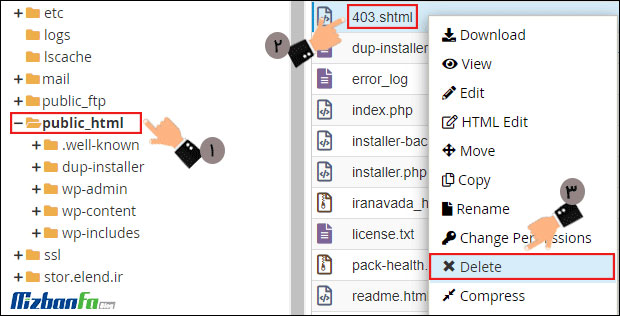How to design and manage error pages in C Panel
An error message often appears when the content of a site is not normally available. If the host is not available, the displayed messages are determined and displayed by the browser. But if the host is available completely or with a defect, the messages displayed are from the error pages of the site. These error pages are usually displayed by default on the web server, but you can customize them to your liking. In this article from the Fa-host knowledge base, we intend on how to customize and manage error pages in C-Panel.
- Error pages in C Panel
- Tutorial for customizing error pages in C Panel
Ability to change the appearance of error pages in C Panel
Web server error messages are available by default for sites on that server. This means that your users will encounter a predefined error page when any of the reasons that lead to error pages appear. However, in the case of messages that are not related to a problem with the host, you have the option to customize the error pages related to your website in C Panel. All you have to do is click on the error code displayed in the “Common Error Codes” section and enter the edit page of this page. In the following, we will teach you how to customize and manage error pages in C Panel step by step.
Tutorial for customizing error pages in C Panel
To access the error page management in C Panel, you need to follow the path below exactly.
- In the first step, you must enter your C-Panel admin panel by entering your username and password.
Learn how to enter the control panel C-panel host - Then click on the ” Error Pages in the ” ADVANCED .
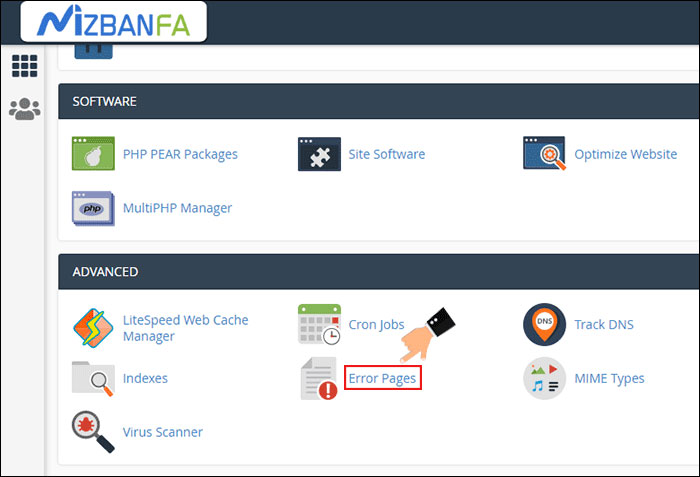
- In this step, a page will be displayed for you through which you will be able to customize and manage error pages. On this page you must follow the following items in order:
- In the first step, you have to select the domain in which you want to manage the error pages through the part specified in the image.
- Then, in the second step, you will encounter two tabs, ” Edit Common Error Codes ” and ” Show All HTTP Error Status Codes “. Using the first case, you can edit the pages of common errors such as error 400, error 401 and.. Using the second tab, you will be able to view and edit all the errors that may be displayed on your website at different times. The most common error pages on the first tab are:
- Error 400 : Invalid Request Error – Unacceptable Request
This error usually occurs when there is a problem verifying your request from the server. - Error 401 : Login Error – Login details for this route are incorrect.
This error usually appears when you enter incorrect information to enter the protected route. - Error 403 : Inaccessibility Error – Access is not possible.
If you are not allowed to access and view the route, such an error will be displayed to users. This can be consciously addressed to management pathways to increase security. By default, this message can also be displayed for non-content routes. - Error 404 : Content Missing Error – There is no displayable content.
If there is no content to display, users will encounter this message when trying to enter a specific address. - Error 500 : Website structural error with web server
This error is typically displayed to users when the web server is unable to display site content. This does not mean a problem on the web server, and dozens of factors, such as unauthorized code in the .htaccess file, can also cause this error.
Select the desired error through one of these two tabs and click on it to enter the page related to customization and management of error pages in the C panel for the selected error.
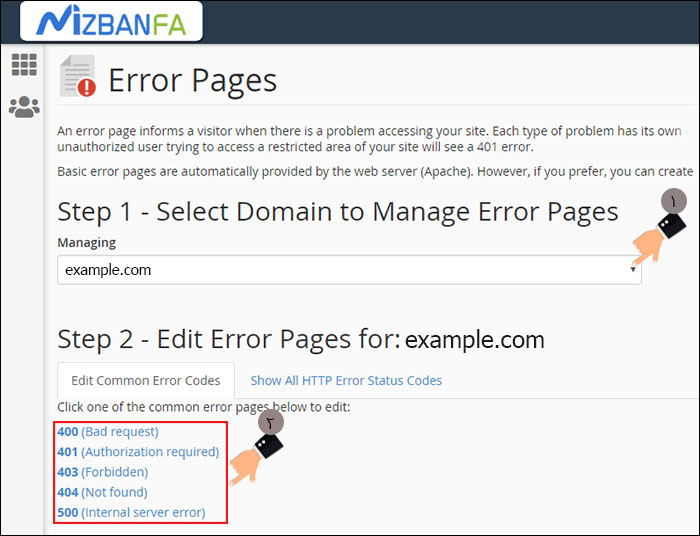
- In this page, you have the possibility to manage the error pages in C Panel according to your needs. In fact, you will see a blank page that you can customize to suit your needs. You can also enter tags such as URL, visitor IP address, requested URL, server name, visitor browser, and redirect status code.
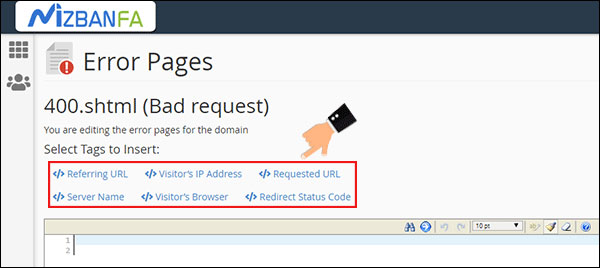
For this tutorial, for example, we are editing message 403. This message is as follows in LightSpeed and Apache web servers.
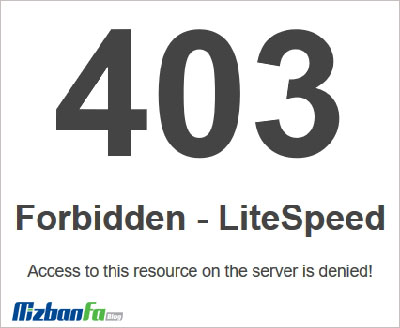

If you want to customize the page for this error, you must proceed as instructed above to enter the page for editing error 403.

As you can see, the 403 file with the shtml extension is available for editing and you can customize it to your liking. After making the necessary changes and clicking the ” Save , the 403.shtml file will be created in the public_html path of the desired domain. If you want to restore everything to default, just delete the created file. If the created file has no content, a white screen with no message will be displayed to visitors. To delete the file, you must proceed in the following order:
- Log in to your C Panel admin panel.
- From the ” FILES ” menu, select the ” File Manager .
- Enter your public_html directory.
- Then find and delete the custom error page file as shown below.
